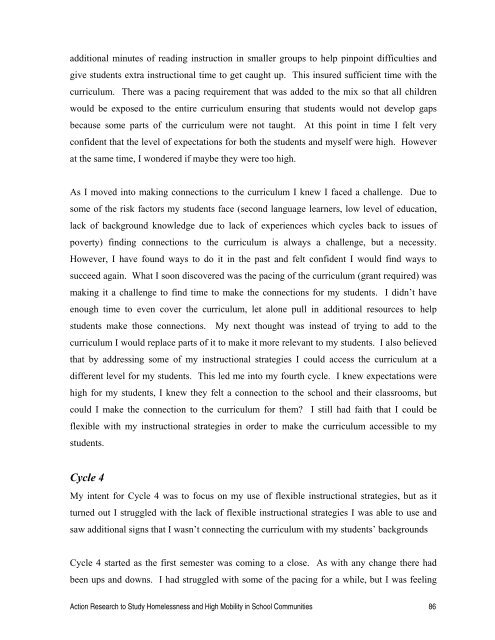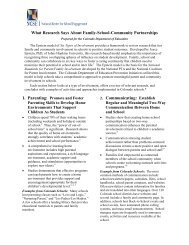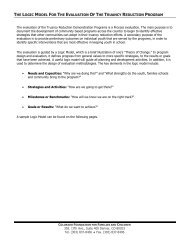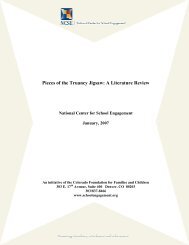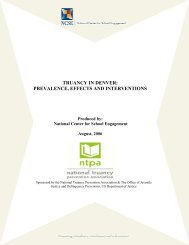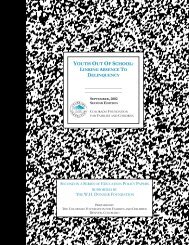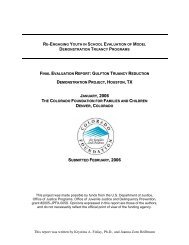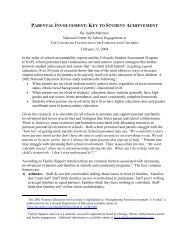Section 1: Academic Achievement - National Center for School ...
Section 1: Academic Achievement - National Center for School ...
Section 1: Academic Achievement - National Center for School ...
Create successful ePaper yourself
Turn your PDF publications into a flip-book with our unique Google optimized e-Paper software.
additional minutes of reading instruction in smaller groups to help pinpoint difficulties and<br />
give students extra instructional time to get caught up. This insured sufficient time with the<br />
curriculum. There was a pacing requirement that was added to the mix so that all children<br />
would be exposed to the entire curriculum ensuring that students would not develop gaps<br />
because some parts of the curriculum were not taught. At this point in time I felt very<br />
confident that the level of expectations <strong>for</strong> both the students and myself were high. However<br />
at the same time, I wondered if maybe they were too high.<br />
As I moved into making connections to the curriculum I knew I faced a challenge. Due to<br />
some of the risk factors my students face (second language learners, low level of education,<br />
lack of background knowledge due to lack of experiences which cycles back to issues of<br />
poverty) finding connections to the curriculum is always a challenge, but a necessity.<br />
However, I have found ways to do it in the past and felt confident I would find ways to<br />
succeed again. What I soon discovered was the pacing of the curriculum (grant required) was<br />
making it a challenge to find time to make the connections <strong>for</strong> my students. I didn’t have<br />
enough time to even cover the curriculum, let alone pull in additional resources to help<br />
students make those connections. My next thought was instead of trying to add to the<br />
curriculum I would replace parts of it to make it more relevant to my students. I also believed<br />
that by addressing some of my instructional strategies I could access the curriculum at a<br />
different level <strong>for</strong> my students. This led me into my fourth cycle. I knew expectations were<br />
high <strong>for</strong> my students, I knew they felt a connection to the school and their classrooms, but<br />
could I make the connection to the curriculum <strong>for</strong> them? I still had faith that I could be<br />
flexible with my instructional strategies in order to make the curriculum accessible to my<br />
students.<br />
Cycle 4<br />
My intent <strong>for</strong> Cycle 4 was to focus on my use of flexible instructional strategies, but as it<br />
turned out I struggled with the lack of flexible instructional strategies I was able to use and<br />
saw additional signs that I wasn’t connecting the curriculum with my students’ backgrounds<br />
Cycle 4 started as the first semester was coming to a close. As with any change there had<br />
been ups and downs. I had struggled with some of the pacing <strong>for</strong> a while, but I was feeling<br />
Action Research to Study Homelessness and High Mobility in <strong>School</strong> Communities 86


